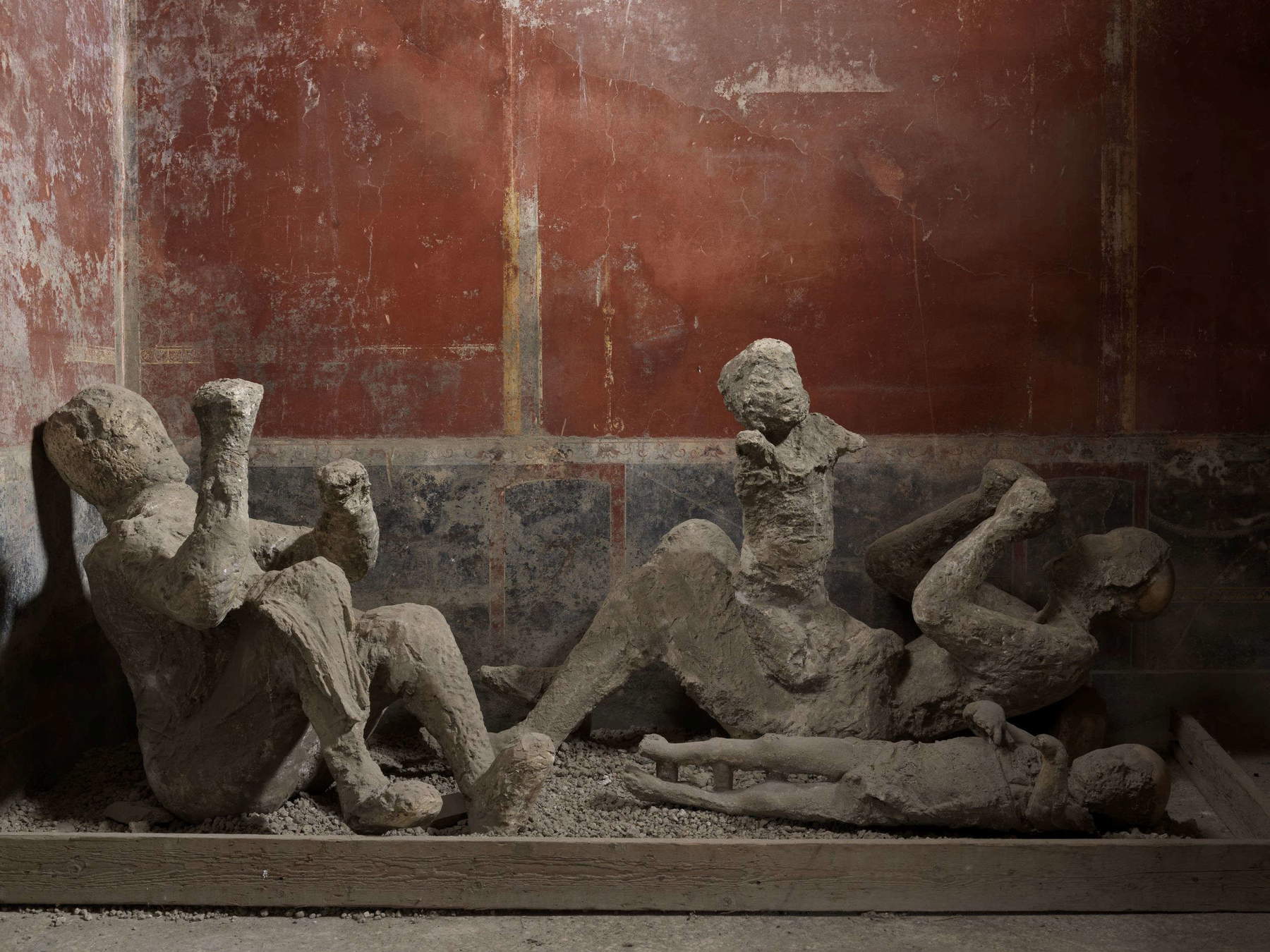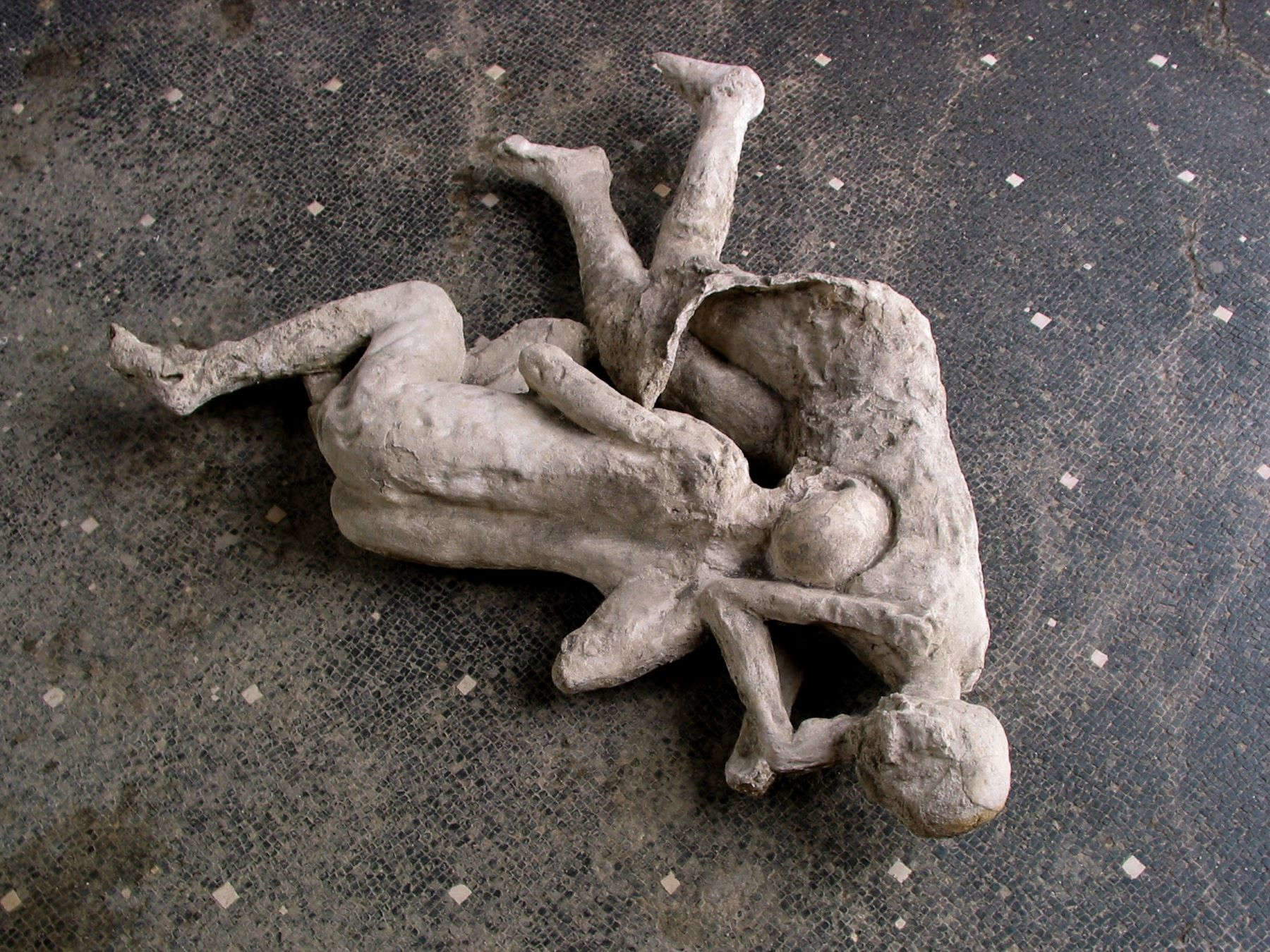New discoveries from Pompeii could change our knowledge about the great archaeological site. A recent study by researchers from theUniversity of Florence, Harvard University and the Max Planck Institute in Leipzig used ancient DNA analysis to revise traditional interpretations regarding the inhabitants of Pompeii, who were buried during the eruption of Mount Vesuvius in 79 AD. The results revealed a surprising variety of gender and kinship, contradicting assumptions based only on the physical appearance and location of the remains.
Since the 19th century, casts, through the method developed at the time by Giuseppe Fiorelli, were made by pouring plaster into the voids left by these bodies after their decomposition. The research team extracted DNA from the skeletal remains embedded in 14 of 86 casts undergoing restoration. This extraction process allowed scholars to accurately establish genetic relationships, determine sex and trace ancestry. Interestingly, the findings often contradicted previous hypotheses based solely on the physical appearance and placement of the casts.
The genetic data also provided information about the descent of the Pompeians, who had different genomic backgrounds. The finding that they were mainly descended from recent immigrants from the eastern Mediterranean highlights the cosmopolitan nature of the Roman Empire. The analysis also showed that traditional interpretations, such as the association of jewelry with femininity or physical proximity as evidence of family ties, are incorrect. For example, an adult with a gold bracelet and a child, initially considered mother and child, turned out to be an unrelated adult male.
The results suggest that integration of genetic data with archaeological and historical data is critical to avoid misunderstandings based on modern assumptions. The findings, published Nov. 7 in the scientific journal Current Biology, thus reveal that some of the stories told for decades about the sexes of individuals and family relationships, which were based on the physical appearance of casts and other archaeological evidence, are either incorrect or not as straightforward as believed.
Pompeii Park has been including ancient DNA analysis of humans and animals in its study protocols for years, integrating other types of data to form a comprehensive and up-to-date interpretation of the site’s archaeological finds and to develop new research methods that further our understanding of the past. This study thus represents a significant change in the understanding of life at Pompeii and underscores the importance of DNA analysis in archaeology.


“This study,” said David Caramelli, professor of anthropology at the University of Florence, “demonstrates how genetic analysis can greatly enrich narratives developed on the basis of archaeological data. These findings challenge long-standing interpretations, such as the association of jewelry with femininity or the interpretation of physical proximity as an indicator of biological relationships. Equally, genetic data complicate simple narratives of kinship: in the House of the Golden Bracelet, which is the only site for which we have genetic data from multiple individuals, the four individuals commonly interpreted as parents and their two children are actually not genetically related.”
“The scientific data we provide are not always in line with common assumptions,” explained David Reich of Harvard University. “One notable example is the finding that an adult wearing a gold bracelet and the child she was holding, traditionally interpreted as mother and child, turned out to be an unrelated adult male and child. Similarly, a pair of individuals thought to be sisters, or mother and daughter, actually includes at least one genetic male. These findings challenge traditional assumptions.”
“Our results have significant implications for interpreting archaeological data and understanding ancient societies,” said Alissa Mittnik, of Max Planck Leipzig. “They highlight the importance of integrating genetic data with archaeological and historical information to avoid misinterpretations based on modern assumptions. This study also highlights the diverse and cosmopolitan nature of Pompeii’s population, reflecting broader patterns of mobility and cultural exchange in the Roman Empire.”
“Furthermore,” added David Caramelli, “it is possible that the exploitation of the casts as vehicles for storytelling led to the manipulation of their poses and positioning by restorers in the past. Genetic data, along with other bioarchaeological approaches, offer an opportunity to deepen our understanding of the lives and behaviors of the people who were victims of the eruption of Vesuvius.”
Pompeii Park Director Gabriel Zuchtriegel concludes by saying that “ancient DNA analyses have been part of Pompeii Park’s study protocols for years now, and not only for what concerns human victims: other lines of research concern, for example, animal victims. Likewise, the Park, through its in-house research laboratory, coordinates a number of research projects related to isotopic analysis, diagnostics, geology and volcanology, and not least reverse engineering.”
 |
| Pompeii, new discovery disproves decades of assumptions about relationships between inhabitants |
Warning: the translation into English of the original Italian article was created using automatic tools. We undertake to review all articles, but we do not guarantee the total absence of inaccuracies in the translation due to the program. You can find the original by clicking on the ITA button. If you find any mistake,please contact us.